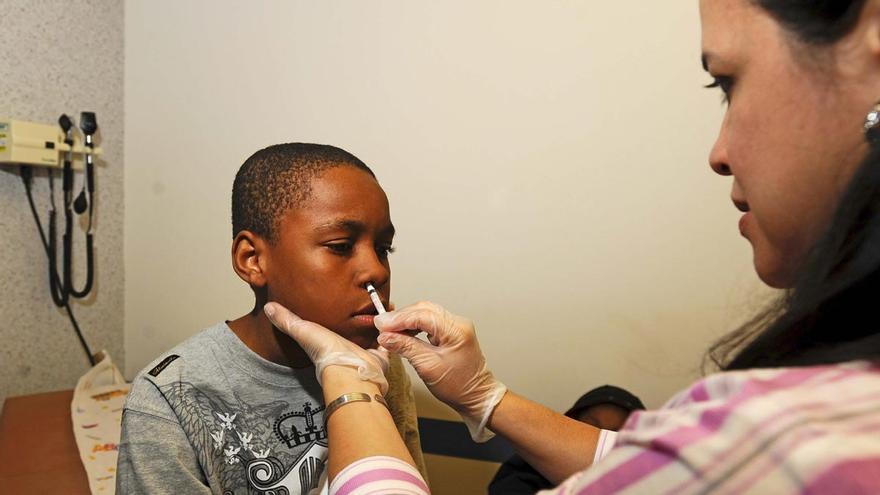A new line of battle against covid appears on the horizon: vaccines intranasally, a promising method, although to be confirmed among humans.
Clinical trials on animals in France are giving results, to the point that two public bodies, Inrae and the University of Tours, have filed a patent application for a model.
According to Isabelle Dimier-Poisson, head of the University’s BioMAP research team, the tests in mice yielded “100% survival” in the specimens vaccinated in this way and then infected with COVID-19. Instead, all unvaccinated mice died.
“The vaccinated animals are 100% protected against symptomatic forms and in principle against severe forms of the virus. And with very low viral load, they are no longer contagious, which is one of the interesting aspects of the nasal route, “said Philippe Mauguin, the president of Inrae, a research institute.
Two extra layers of protection
In an article that was published in July in the journal Science, researchers Frances Lund and Troy Randall recall that compared to intramuscular vaccines, intranasal vaccines show two additional layers of protection.
The first is IgA, a type of antibody that plays a crucial role in mucosal immune function.
The second are memory B and T cells, which reside in the respiratory mucosa and they form a particular barrier against infection.
“When the virus infects a person, it usually enters through the nose, so the idea is to close that door of entry”, explains Nathalie Mielcarek, director of research at Inserm, leader of a team at the Pasteur Institute in Lille, which is working about a nasal pertussis vaccine project.
“With intramuscular vaccines, the immune response in the mucosa is not very long-lasting or very strong, so it is more advantageous to immunize at the nasal level,” adds Morgane Bomsel, immunologist and director of research at the Cochin Institute.
Booster vaccine
Vaccines currently on the market protect against severe cases of covid-19, but they are less efficient against transmission.
By receiving the drug directly into the nasal mucosa, patients have less viral load in the lungs “that is, they are less severe cases and consequently there is less risk of transmission”, explains Nathalie Mielcarek.
At the moment only one intranasal vaccine model has been used, against influenza, in the United States.
According WHO there are eight treatments in a state of clinical evaluation, and the most advanced is being developed by a group of Chinese universities and companies. In addition, there are dozens under study.
Spread to the brain
When the covid-19 appeared the Pasteur Institute in France, associated with the company Theravectys, quickly developed a vaccine that encoded the Spike antigen, the protein that allows SARS-CoV to penetrate cells.
“We have tested various routes of administration and have detected, in preclinical trials, that when the injection was carried out intranasally, complete eradication of the virus was achieved in animals,” explains Laleh Majlessi, research director of the joint laboratory.
Another advantage of this intranasal method is that it involves a barrier to the spread of the virus in the brain. And it also appears to be effective against all variants of Sars-CoV-2, according to Laleh Majlessi.
Related news
Intranasal vaccine could be an effective way to administer a booster dose, in countries where the population has already received two previous doses.
By allowing the reduction of the transmission of the virus “could allow a return to normal life before the pandemic, without social distancing and without masks”, hopes Isabelle Dimier-Poisson.
– .


